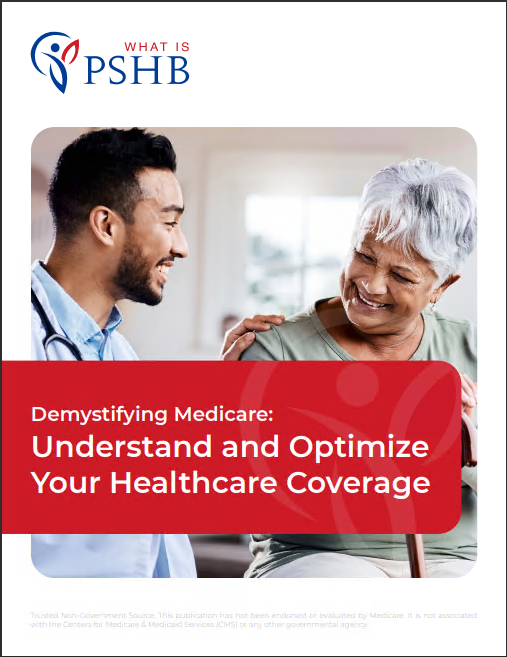Key Takeaways
-
Your PSHB plan works with Medicare in 2025, but the way they coordinate depends on timing, your choices, and your eligibility.
-
Not enrolling in Medicare Part B when required could mean higher out-of-pocket costs—or even losing PSHB coverage altogether.
When PSHB and Medicare Meet: What You Should Know
If you’re a United States Postal Service (USPS) employee or retiree, 2025 brings a big shift in your healthcare: the Postal Service Health Benefits (PSHB) program is now live. And if you’re also eligible for Medicare, things get a little more layered. You might think, “I’ve got a federal health plan, so I’m covered no matter what.” But here’s the thing—Medicare and PSHB don’t always play together the way you’d expect.
Let’s break down how these two systems interact, when they complement each other, and where the surprises might hit.
PSHB Basics: The New Health Era for USPS
The PSHB program officially replaced the old Federal Employees Health Benefits (FEHB) plan for postal employees and retirees starting January 1, 2025. If you’re a current USPS worker, you’re automatically enrolled. If you’re retired, you were either auto-enrolled or had a chance to choose your plan during the Open Season between November and December 2024.
Here’s what matters for 2025:
-
PSHB offers similar coverage types as FEHB: Self Only, Self Plus One, and Self and Family.
-
Your plan is now tied more directly to Medicare if you’re 65 or older.
-
Your eligibility and enrollment choices directly affect how PSHB and Medicare share the cost of your care.
Medicare and PSHB: It’s Complicated
Medicare has four parts, but the ones that matter most for PSHB coordination are:
-
Part A (Hospital Insurance): Usually premium-free and covers inpatient care.
-
Part B (Medical Insurance): Covers outpatient services, and yes, it has a monthly premium.
If you’re retired and eligible for Medicare, here’s the big catch in 2025: You must enroll in Medicare Part B to keep your PSHB coverage—unless you’re specifically exempt.
Exemptions include:
-
You retired on or before January 1, 2025.
-
You’re not eligible for Medicare Part A without paying a premium.
-
You were an employee (not annuitant) aged 64 or older as of January 1, 2025.
What Happens If You Don’t Enroll in Part B
Here’s the shocker: If you’re required to enroll in Part B and don’t, you could lose your PSHB coverage entirely. Not just reduced benefits—gone. That’s a massive shift from how FEHB worked.
So what’s the timeline for enrolling?
-
Your Initial Enrollment Period for Medicare starts 3 months before your 65th birthday and ends 3 months after.
-
Missed it? The General Enrollment Period runs January 1 through March 31 each year, with coverage starting July 1.
And if you delay? You might also get hit with a late enrollment penalty that sticks with you for life.
How They Coordinate: Who Pays First?
This is where it gets a little tricky. When you have both Medicare and a PSHB plan:
-
Medicare is the primary payer if you’re retired.
-
PSHB is secondary, picking up costs Medicare doesn’t cover.
But if you’re still actively working for USPS and not retired yet:
-
PSHB remains the primary payer.
-
Medicare steps in second, but it usually pays less because your PSHB plan already covers the bulk.
In either case, having both means more of your costs are covered—if you’re enrolled properly.
PSHB Plans With Medicare: What’s In It for You?
Many PSHB plans in 2025 are designed to reward you for enrolling in Medicare. Here’s how they might help reduce your costs:
-
Lower deductibles when both plans are active.
-
Waived copayments or coinsurance for certain services.
-
Part B premium reimbursements, in some plans.
-
Automatic Part D enrollment via Medicare Employer Group Waiver Plan (EGWP) for prescription drug coverage.
Important note: These benefits depend on your specific PSHB plan, so don’t assume they all offer the same extras. Always double-check the brochure during Open Season.
Timing Is Everything: Don’t Miss the Windows
If you’re turning 65 in 2025, your Medicare choices impact your entire retirement healthcare setup. Here’s what to do, and when:
-
Start planning 6 months before your 65th birthday. Look at your PSHB options and understand which ones coordinate best with Medicare.
-
Enroll in Medicare Part A and B during your Initial Enrollment Period to avoid late penalties.
-
Keep documentation of your Medicare enrollment for future PSHB confirmation.
What About Part D and Prescription Drugs?
PSHB plans for Medicare-eligible retirees automatically enroll you into a Medicare Part D drug plan through an Employer Group Waiver Plan (EGWP). That’s good news because:
-
You don’t need to sign up for a separate Part D plan.
-
It’s designed to give better coverage and lower out-of-pocket drug costs.
-
You avoid penalties that usually apply to late Part D enrollment.
But again, this only works if you’re enrolled in Part A and B. If you skip Medicare, you may lose these drug benefits, too.
Retired vs. Active Employees: The Experience Isn’t the Same
For retirees, Medicare is more than a sidekick—it becomes the main event.
-
Retirees: Medicare pays first, PSHB steps in second.
-
Active Employees: PSHB pays first, and Medicare doesn’t contribute much.
So, if you’re still on the job, enrolling in Medicare isn’t required—but it’s something you might still consider if you’re close to retirement or have health conditions.
Just don’t assume you can wait forever. Once you retire, the clock starts ticking.
How to Avoid Unexpected Out-of-Pocket Costs
Here’s what to keep in mind so your wallet doesn’t take a hit:
-
Confirm your Medicare enrollment before you retire if you’re 65 or older.
-
Choose a PSHB plan that clearly states how it works with Medicare.
-
Review out-of-pocket maximums—Medicare may help lower them.
-
Understand your coinsurance and copayments, especially for specialty care and hospital stays.
PSHB plans vary, and not all offer the same level of Medicare coordination. Reading the fine print during Open Season can help you dodge future surprises.
Don’t Forget Spouses and Family Members
If your family is covered under your PSHB plan, their Medicare status matters too. For example:
-
A spouse who is Medicare-eligible may also need to enroll in Part B to keep full PSHB benefits.
-
Younger dependents aren’t affected by Medicare rules but still rely on your PSHB enrollment.
Coordinating coverage gets more complex with more people involved, so plan ahead—especially if you’re covering multiple generations.
Switching Plans Later: You Still Get a Say
Each year’s Open Season gives you a chance to change your PSHB plan. If your health needs change—or if you enroll in Medicare and want a better coordinating plan—you’re not locked in forever.
-
Open Season happens each year from November to December.
-
You can switch PSHB plans, add Medicare coordination, or drop family members if needed.
-
Mid-year changes are only allowed during Qualifying Life Events, like retirement or loss of other coverage.
So while your choices in 2025 set the tone, they aren’t permanent. Stay flexible and revisit your coverage as your life changes.
What If You’re Not Yet 65?
If you’re younger than 65, you’re not eligible for Medicare unless you qualify due to disability. But it’s still smart to understand how things will change once you do become eligible:
-
Mark your calendar for your Initial Enrollment Period.
-
Check your PSHB plan’s Medicare strategy so you know what to expect.
-
Talk to HR or a licensed agent about preparing for the Medicare transition.
The earlier you prep, the smoother the ride when you hit Medicare age.
Get the Most From PSHB and Medicare
When PSHB and Medicare work together, the combo can save you money and offer excellent coverage. But missing enrollment windows or skipping Medicare Part B can create serious headaches.
So here’s what you should do:
-
Understand whether you’re required to enroll in Medicare Part B.
-
Plan Medicare enrollment around your retirement date.
-
Compare PSHB plans during Open Season, focusing on how well they coordinate with Medicare.
-
Keep paperwork organized for proof of Medicare enrollment.
Make Smart Coverage Choices Starting Now
Whether you’re already retired or still working your USPS job, understanding how PSHB and Medicare interact in 2025 is essential. The two systems can work beautifully together—but only if you follow the rules, stay on top of deadlines, and choose the right plan.
Have questions or need help making sense of your choices? Get in touch with a licensed agent listed on this website to get personalized, professional advice.





